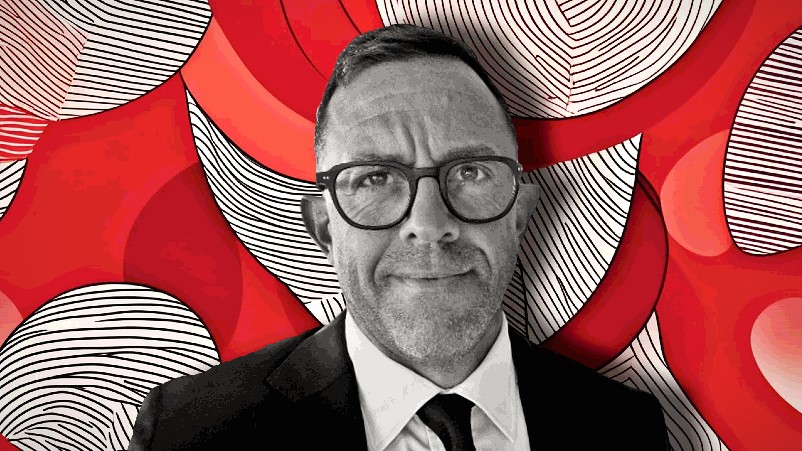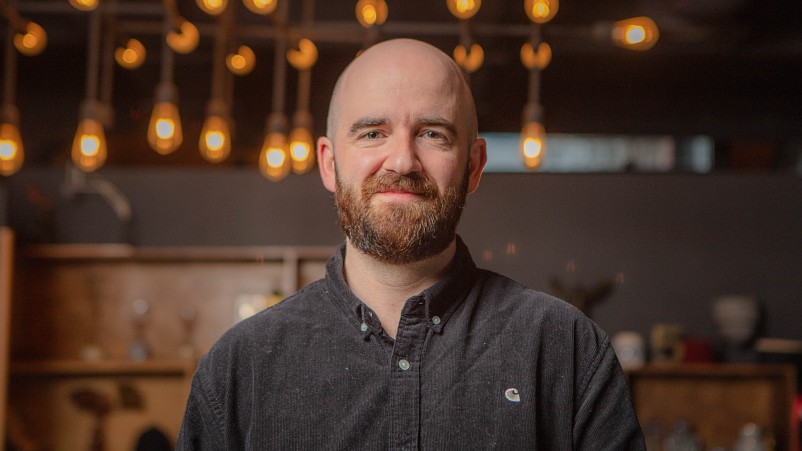Seven calls in ex-Amazon Media, WPP, IPG, Dentsu media boss Henry Tajer to advise on market strategy as principal media deals surge

Seven Network confirmed former Amazon Media ANZ and holdco agency CEO Henry Tajer has been engaged to advise the broadcaster on building out its commercial strategy following a sweeping cost-out and redundancy program in June that included the exit of long serving Chief Revenue Officer Kurt Burnette. Tajer has been meeting with media agency group executives in recent weeks.
Seven West Media has engaged the former Australian and global CEO of IPG Mediabrands and Amazon’s Media’s first ANZ lead in an advisory role on its market strategy, although details are scant.
Tajer has met with agency group bosses and investment directors in recent weeks as a Seven advisor. A Seven spokesperson confirmed Tajer’s role: “We have Henry helping us a few days a week to think differently across a wide range of projects where he can bring a different perspective.”
Tajer returned from his global role as CEO of IPG Mediabrands in 2017 and was Amazon Media ANZ’s first Managing Director. He was also Dentsu ANZ CEO for a year before his strategy to overhaul the group and reduce its reliance on more creative techniques to extract revenue from media companies hit resistance with global Dentsu management.
Tajer was an early proponent, while running IPG Mediabrands in Australia, of “principal” media deals where agency groups strike upfront contracts to buy advertising inventory from media owners and then sell that on to their advertising clients with handsome margins – essentially arbitrage, contractually signed-off by advertisers. The success of this trading model in Australia was part of the reason for Tajer’s rise to global Mediabrands CEO in 2015 – although there was resistance internally in US HQ at the time.
But principal media agency trading deals are now underpinning the earnings results of the two current best performing global agency holding companies – Publicis and Omnicom, according to Madison and Wall industry analyst Brian Wieser.
“Marketers have basically decided that if they don't want to pay fees for services, because it's so called non-working spend, and they'd rather bundle it in with working spend, well that’s marketers’ prerogative,” Wieser told Mi3 in February. “We can argue about the pros and cons. But collectively they are saying that they kind of accept, if not sometimes prefer, that [arbitrage] model.”
One of Tajer’s biggest clients while global CEO of Mediabrands was Amazon, which severed its contract last month with IPG and announced Omnicom and WPP jointly in a global appointment. Two of the largest global principal trading deals to date are understood to be tied up in Amazon’s deal with the two holding companies. As part of the terms in Amazon’s global media buying and planning contract, Omnicom and WPP have committed to a global volume buy of advertising inventory across Amazon’s streaming and ecom assets. “Watch Omnicom and WPP clients pile into Amazon now,” said one agency executive familiar with principal trading deals. But these fast-growing contracts are broader and more often are not linked to a global account review like Amazon.
For Seven, Tajer’s remit remains unclear although agency groups said the meetings so far were exploratory. The company is under pressure versus its big local media rivals – Nine and News Corp – because it hasn’t diversified as fast or broadly.
Last year at Seven’s Upfronts, it pinned its future on a handful of commercial programs which landed market interest – a trading and booking platform called Phoenix, bringing metro and regional linear TV and digital audiences on 7plus into a single platform
Former Seven Chief Revenue Officer Kurt Burnette – ousted in the cost-out program in June – said at that event that the group’s ambition was “that by 2030, every ad and integration served by Seven West Media will be personalised, optimised and addressable. We are well and truly on that journey.”
That may be too slow given the pace of the current market shake-up and arrival of global streaming platforms into the ad business – but Seven appears to be the most aggressive among broadcast groups driving AI-led initiatives, including personalisation.
Also speaking at last year's upfronts, Seven’s Chief Digital Officer Gereurd Roberts said that personalised shows, visuals and prompts for the 13.5 million registered users to 7plus, it's BVOD platform, had delivered a 48 per cent increase in minutes viewed and three times the viewer interactions over “previous human’ curation.
“We’ve moved from being one product for all, where everyone’s seeing the same thing, to being truly one-to-one. We’ve got 13.5 million registered users … we now have 13.5 million different versions of Seven products because every single one is unique, tailored to the individual user and to their preferences,” per Roberts.
Since Seven’s operational purge in June, it has struck an expanded venture with San Francisco-based AI firm Databricks in which a year-long program of two-to-four week sprints to develop and test “fast prototypes” of dozens of AI and machine learning pilots have started in a new unit called the Seven AI Factory.
Personalised adloads is one of the early tests in planning. “We want to deliver ad loads based on your engagement score,” Seven’s Director, Data and Growth, Andrew Brain, told Mi3 recently. “If say your session duration is two hours, why would you get the same ad load experience to [someone who] only came in for half an hour?” Brain said the ad load sprint would determine if Seven has “the data points” and technical capability to build it. “Will we be delivering in two weeks? Absolutely not but we're going to spin that in a sprint.”
Where and what Tajer is involved with in these programs and beyond is unclear – but it’s unlikely to be conventional.
In a market hungry for use cases, here's some of the AI Factory fast-protoyping trials Seven plans for the coming year:
- Predictive audience modelling: If a brand wants to run a campaign targeting women aged 25-34 over the next month, the system predicts audience demographics and engagement for the next 28 days with 94 per cent accuracy.
- Content scheduling optimisation: When Seven needs to maximise viewership for a new drama series, the machines analyse historical viewing patterns and predict the optimal time slots for releasing new episodes, potentially increasing viewership by identifying when the target audience is most likely to be engaged.
- Personalised ad loads: The system adjusts ad frequency based on individual engagement scores. The long-duration viewer might see fewer, more spaced-out ads, while the short-session viewer gets a more condensed ad experience, optimising both user experience and ad revenue.
- Audience re-engagement: Seven identifies a significant number of users who haven't accessed the platform in the last three months. AI analyses the viewing history and preferences of these lapsed users, then generates personalised content recommendations and targeted notifications to re-engage them, aiming to bring back 10 per cent of inactive users.
- Revenue forecasting: Sales teams need to set targets for the upcoming quarter – the machines analyse trends in direct bookings and SSP (Sell Side Platform) data, providing a detailed forecast of expected revenue, allowing for more accurate goal-setting and resource allocation.
- Content affinity prediction: Seven might be considering purchasing rights to a new international series. The machines dissect viewing patterns, content metadata and audience preferences to predict how well the new series will perform with Seven's audience.
- Dynamic programming guide: A user opens Seven's streaming app looking for something to watch – AI generates a personalised programming guide based on the user's viewing history, current popular content, and predicted interests, potentially increasing watch time and engagement.
- Automated Insights generation: A Seven exec needs quick insights on the previous night's primetime performance – using natural language processing, the executive can ask: ‘How did our 8pm show perform last night?’ and receive an instant report with key metrics and comparisons to historical data.
- Cross-platform viewing prediction: Seven wants to optimise its content strategy across both broadcast and streaming platforms. The machines tap viewing patterns across all platforms to predict how audiences will split between broadcast and streaming for different types of content, informing programming and advertising strategies.
- Churn prediction and prevention: Seven wants to reduce subscriber churn on its streaming platform – patterns that indicate a user is likely to churn are identified and personalised retention strategies such as targeted content recommendations or special offers are recommended.



